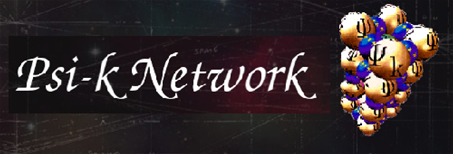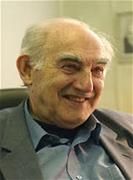 In 2006, a different, second international conference called, "Fundamental Problems
of High-Temperature Superconductivity" was held in Zvenigorod, Russia, in honor of
Professor Vitaly Ginzburg's 90th birthday. Every physicist is familiar with the theory
of Ginzburg and Landau, and the superconducting-physics-community still recognizes
Ginzburg as one of the leading proponents of high-temperature superconductivity. Unfortunately,
because of declining health, Ginzburg was unable to attend; however, he did address
the conference with brief remarks, and ultimately wished success to all. No doubts
he would have desired the same good fortune for our meeting.
In 2006, a different, second international conference called, "Fundamental Problems
of High-Temperature Superconductivity" was held in Zvenigorod, Russia, in honor of
Professor Vitaly Ginzburg's 90th birthday. Every physicist is familiar with the theory
of Ginzburg and Landau, and the superconducting-physics-community still recognizes
Ginzburg as one of the leading proponents of high-temperature superconductivity. Unfortunately,
because of declining health, Ginzburg was unable to attend; however, he did address
the conference with brief remarks, and ultimately wished success to all. No doubts
he would have desired the same good fortune for our meeting.
Moreover, many of Ginzburg's remarks are just as vital today, especially after the
discovery of superconductivity in Superhydrides, which is due to the electron-phonon
mechanism of pairing. Below, we translate some excerpts from his inspiring address.
To the Participants of the Conference on Superconductivity...
I am involved in the physics of superconductivity already 63 years (since 1943), and
have solely one goal: to accelerate the research in that area.
Everybody knows these days that explorations in superconductivity belong to one of
the most important directions of fundamental physics. And that there is currently
a direct connection of these explorations with the applied physics...
Benefits of practical applications, naturally, are attractive, but they cannot diminish
the interest of even the most abstract, as it looks today, scientific problems...
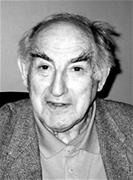 There is complete discordance in contemporary literature [about the mechanism which
is responsible for pairing in high-temperature superconductors], though 20 years have
passed since the discovery of HTSC. Complete negligence of electron-phonon interaction
(EPI) always seemed the most bizarre to me. One of many possible reasons might have
been absence of the isotope effect in regards to temperature. However, this can be
explained even with the presence of EPI. Importantly, isotopic replacements have influence
on some superconducting samples' properties. While the absence of the isotope effect
in the presence of EPI is relatively easy to explain, I have no idea how to explain
indications of the isotope effect in absence of EPI...
There is complete discordance in contemporary literature [about the mechanism which
is responsible for pairing in high-temperature superconductors], though 20 years have
passed since the discovery of HTSC. Complete negligence of electron-phonon interaction
(EPI) always seemed the most bizarre to me. One of many possible reasons might have
been absence of the isotope effect in regards to temperature. However, this can be
explained even with the presence of EPI. Importantly, isotopic replacements have influence
on some superconducting samples' properties. While the absence of the isotope effect
in the presence of EPI is relatively easy to explain, I have no idea how to explain
indications of the isotope effect in absence of EPI...
Thus, I think, that for the known HTSC, EPI plays an important role... This circumstance
is important from the point of view of obtaining novel HTSC with possibly higher values
of temperature. Indeed, one can hope to raise temperature by changing the structure
and the lattice of the material. Discovery of superconductivity in MgB2 with temperature
= 40 K, undoubtedly caused by EPI, is important for the same reasoning...
It is important that there are no upper limits on the values of temperature... In
brief, we are not aware of any results which prohibit the possibility of reaching
room-temperature superconductors. It is another story, that such a task may, undoubtedly,
be difficult, and even beyond the reach of contemporary, available facilities. That
makes it more interesting, to challenge Nature by trying to create room-temperature
superconductors...
I wish success to the conference,
-Vitaly Ginzburg, 23 August 2006
Courtesy of Dr. Ivan Bozovic, please click here to read his article, On Ginzburg, Nobel, and atomic-layer engineering of room temperature superconductors.
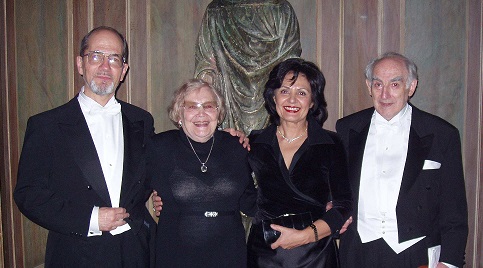

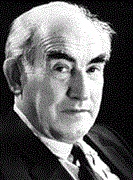 To commemorate the centennial of Professor Vitaly Ginzburg, the Institute for Quantum
Studies dedicated our colloquium in recognition of both his work and influence as
a leading proponent in high temperature superconductivity.
To commemorate the centennial of Professor Vitaly Ginzburg, the Institute for Quantum
Studies dedicated our colloquium in recognition of both his work and influence as
a leading proponent in high temperature superconductivity. In 2006, a different, second international conference called, "Fundamental Problems
of High-Temperature Superconductivity" was held in Zvenigorod, Russia, in honor of
Professor Vitaly Ginzburg's 90th birthday. Every physicist is familiar with the theory
of Ginzburg and Landau, and the superconducting-physics-community still recognizes
Ginzburg as one of the leading proponents of high-temperature superconductivity. Unfortunately,
because of declining health, Ginzburg was unable to attend; however, he did address
the conference with brief remarks, and ultimately wished success to all. No doubts
he would have desired the same good fortune for our meeting.
In 2006, a different, second international conference called, "Fundamental Problems
of High-Temperature Superconductivity" was held in Zvenigorod, Russia, in honor of
Professor Vitaly Ginzburg's 90th birthday. Every physicist is familiar with the theory
of Ginzburg and Landau, and the superconducting-physics-community still recognizes
Ginzburg as one of the leading proponents of high-temperature superconductivity. Unfortunately,
because of declining health, Ginzburg was unable to attend; however, he did address
the conference with brief remarks, and ultimately wished success to all. No doubts
he would have desired the same good fortune for our meeting.  There is complete discordance in contemporary literature [about the mechanism which
is responsible for pairing in high-temperature superconductors], though 20 years have
passed since the discovery of HTSC. Complete negligence of electron-phonon interaction
(EPI) always seemed the most bizarre to me. One of many possible reasons might have
been absence of the isotope effect in regards to temperature. However, this can be
explained even with the presence of EPI. Importantly, isotopic replacements have influence
on some superconducting samples' properties. While the absence of the isotope effect
in the presence of EPI is relatively easy to explain, I have no idea how to explain
indications of the isotope effect in absence of EPI...
There is complete discordance in contemporary literature [about the mechanism which
is responsible for pairing in high-temperature superconductors], though 20 years have
passed since the discovery of HTSC. Complete negligence of electron-phonon interaction
(EPI) always seemed the most bizarre to me. One of many possible reasons might have
been absence of the isotope effect in regards to temperature. However, this can be
explained even with the presence of EPI. Importantly, isotopic replacements have influence
on some superconducting samples' properties. While the absence of the isotope effect
in the presence of EPI is relatively easy to explain, I have no idea how to explain
indications of the isotope effect in absence of EPI...








